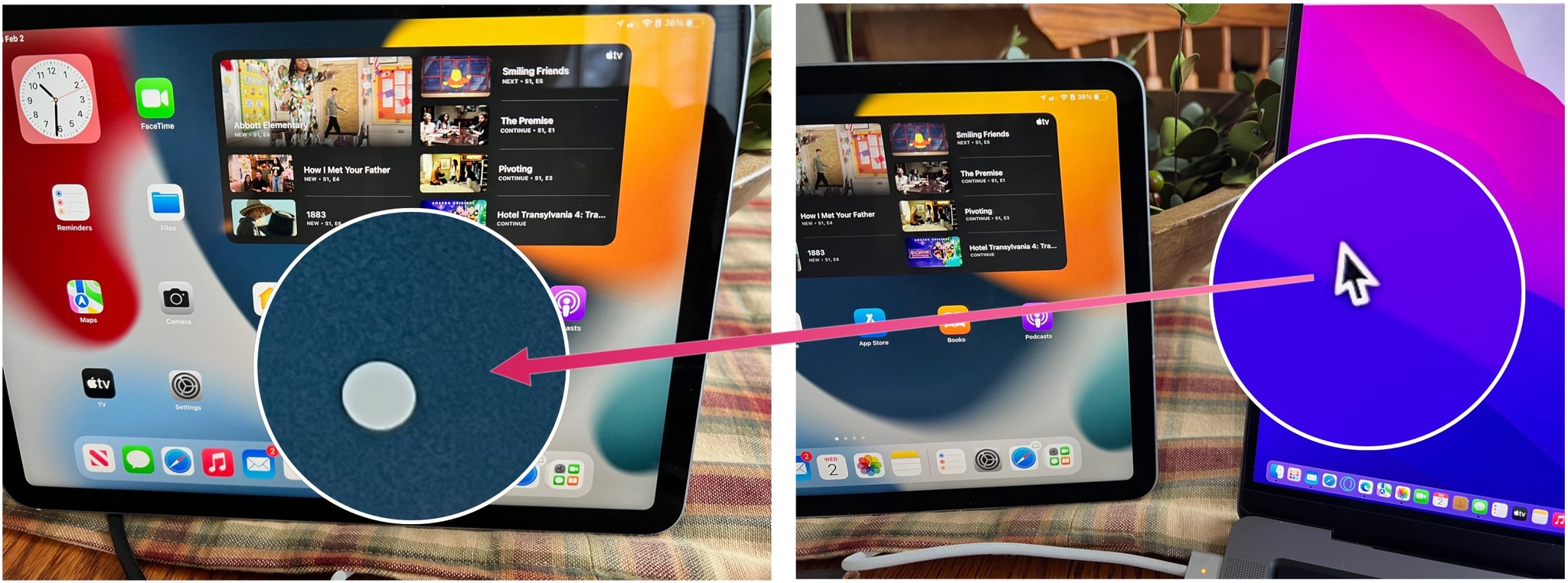Mac Universal Control is out, and here are our first impressions of it

I was almost convinced that Universal Control would become Apple's next AirPower, a heavily-anticipated new product that was announced, delayed, then canceled. Luckily, however, that isn't the case.
After first being announced in June, then never spoken about by Apple again, the software feature is alive and well. It is currently being tested by Apple developers and public beta users. Most likely, the new tool, which lets you move between iPads and Macs using your trackpad, mouse, or keyboard, will arrive for the public this month or next.
As a public beta tester, I've been putting the first version of Universal Control through the motions in recent days. I found this fantastic new feature is already changing my daily workflow.
Universal Control: what it's about
As we previously noted, Universal Control makes it possible to move back and forth wirelessly and via USB between the best Macs and iPads using a keyboard, mouse, or trackpad when the devices are sitting side-by-side. You can even move files such as photos seamlessly between the two.
Universal Control sounds a lot like Sidecar, a previously released software feature that lets you extend or mirror your Mac display onto an iPad. Though they're somewhat similar, these tools are different. In this case, it's all about the convenience of seamlessly using the same accessories with multiple devices.
As Apple explains, you can move "your cursor from your Mac to your iPad, type on your Mac and watch the words show up on your iPad, or even drag and drop content from one Mac to another."

Universal Control just works after the intial setup, assuming you have the software and hardware that support it.
iMore offers spot-on advice and guidance from our team of experts, with decades of Apple device experience to lean on. Learn more with iMore!
You must have macOS 12.3 or later and iPadOS 15.3 or later installed on your supported Mac and iPad, respectively. Supported devices include the MacBook Pro (2016 and later), MacBook (2016 and later), MacBook Air (2018 and later), iMac (2017 and later), iMac (5K Retina 27-inch, Late 2015), iMac Pro, Mac mini (2018 and later), and Mac Pro (2019); and iPad Pro, iPad Air (3rd generation and later), iPad (6th generation and later), and iPad mini (5th generation and later). Additionally, both devices must be signed in to iCloud with the same Apple ID using two-factor authentication.
For wireless connections, both devices must have Bluetooth, Wi-Fi, and Handoff turned on and within 10 meters (30 feet) from one another. To use Universal Control over USB, you must trust your Mac on the iPad.
Universal Control: The good
In the first developer and public beta, Universal Control works very well. Imagine how you use a trackpad/mouse with a keyboard on your Mac, then think about how you move your finger across the iPad. Both processes still work the same with Universal Control, except now they are side-by-side and use the same hardware. Yes, it's really that simple.
Universal Control: The (somewhat) bad
Honestly, there's not much to criticize about Universal Control except perhaps the current setup process. Before using Universal Control, you must follow a few steps on both devices. None of these steps are difficult, although they could be enough to turn off some users. Luckily, as a beta product, Universal Control will likely undergo some changes in the coming weeks. One of these could be the elimination altogether of these setup steps. (Perhaps Apple will turn the feature "on" by default and only require steps to turn it off.)
Another thing I'd like to see with Universal Control is how a pointer is displayed on the iPad. Right now, as you move between Mac and iPad, you see the traditional pointer transform into a circle. It's the same circle you see whenever using a peripheral on the tablet (see below). A better way would be for Apple to ditch the circle and use an arrow pointer across all devices. Doing so would make the process even more seamless. Still, I'm aware such a change might not be as easy to accomplish as one might expect. With macOS and iPadOS, Apple has developed different sizes of touch targets, with the one on the iPad bigger. This would have to be addressed before any changes could be made.

Beyond these somewhat modest concerns, Universal Control is already a winner, and I can't wait for everyone else to begin using it. Stay tuned.

Bryan M. Wolfe has written about technology for over a decade on various websites, including TechRadar, AppAdvice, and many more. Before this, he worked in the technology field across different industries, including healthcare and education. He’s currently iMore’s lead on all things Mac and macOS, although he also loves covering iPhone, iPad, and Apple Watch. Bryan enjoys watching his favorite sports teams, traveling, and driving around his teenage daughter to her latest stage show, audition, or school event in his spare time. He also keeps busy walking his black and white cocker spaniel, Izzy, and trying new coffees and liquid grapes.
